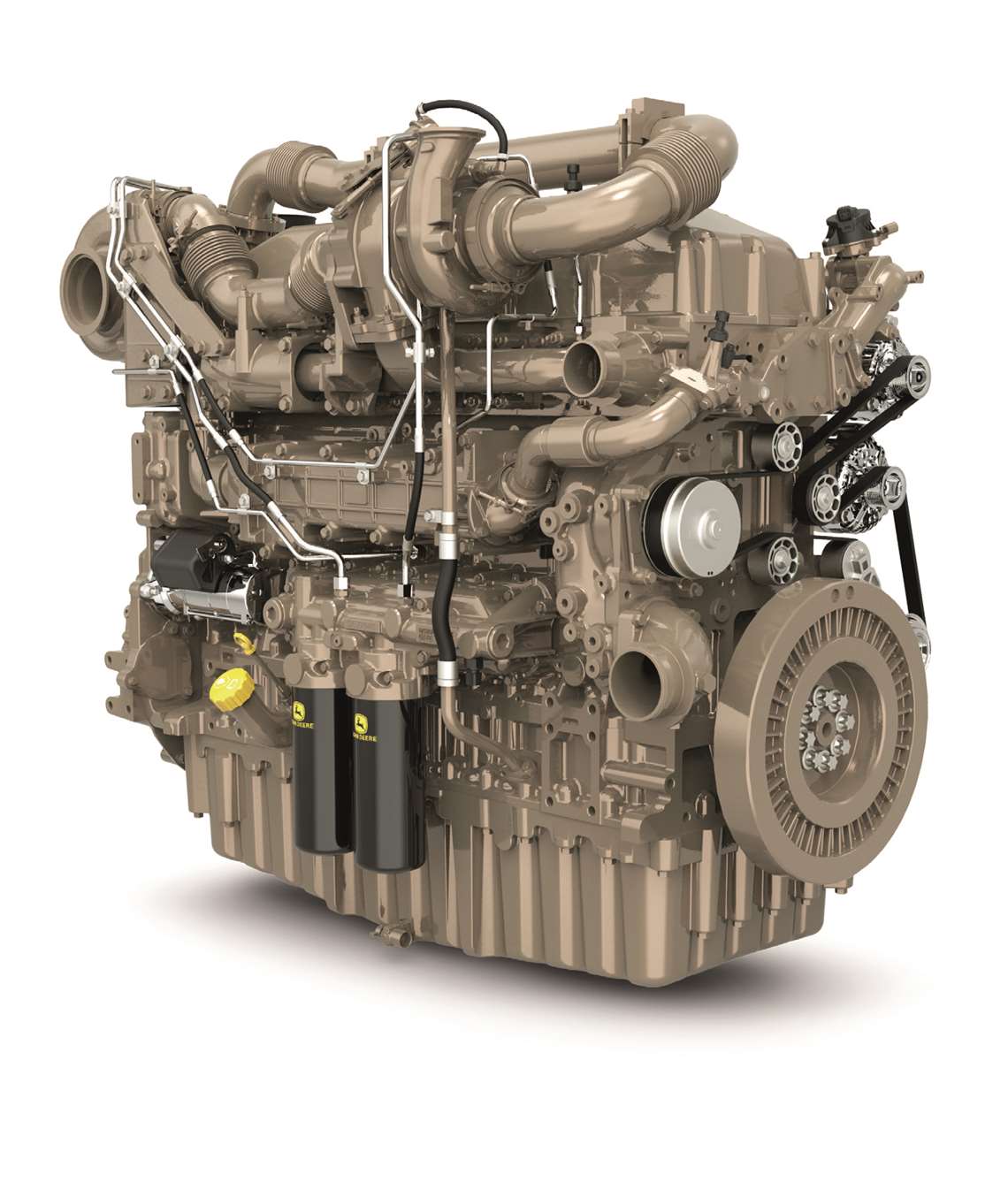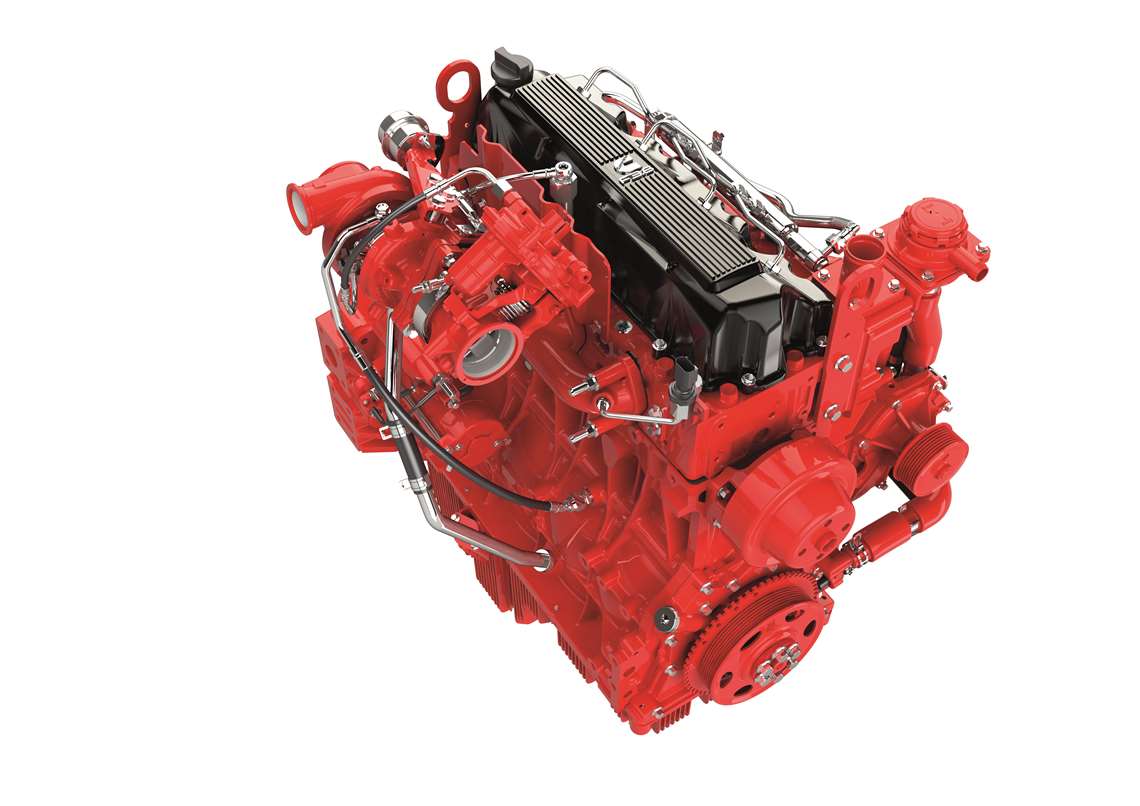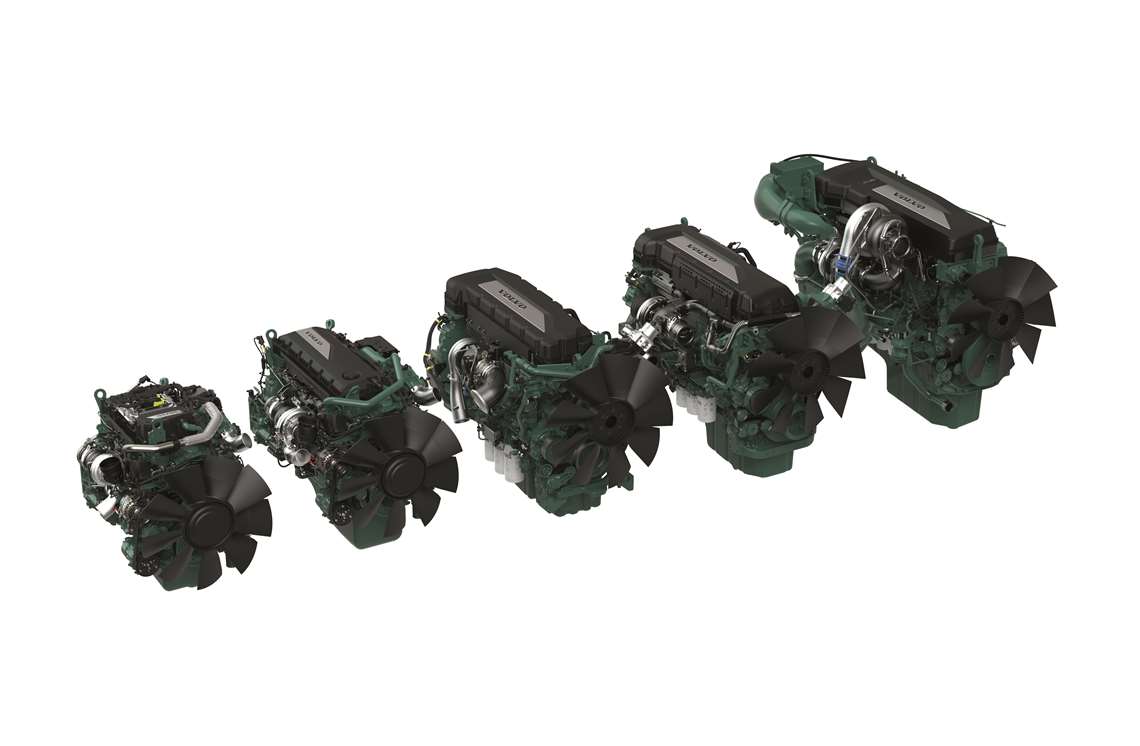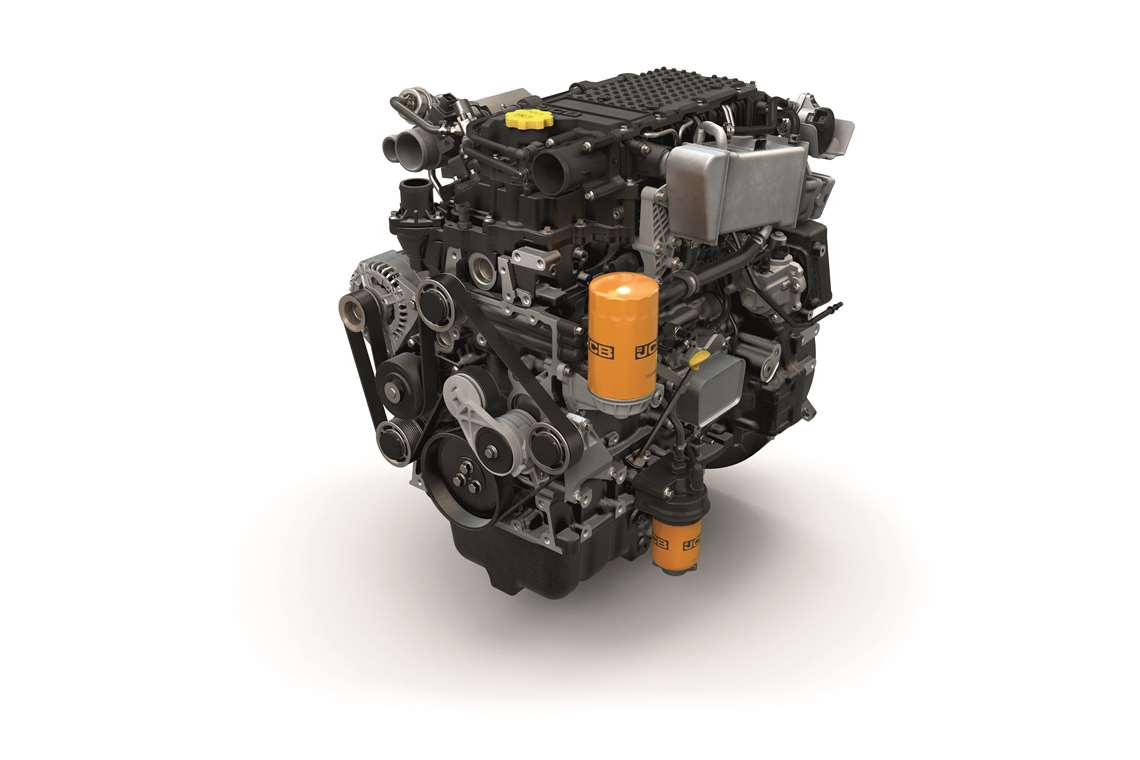Engines: The beauty of Stage V
10 March 2021
Electromobility may be the buzzword, but engine makers are still devoting time and energy to improving diesel
 John Deere says the 18 litre engine it launched at 2020’s ConExpo was the result of a ‘clean-sheet design process’
John Deere says the 18 litre engine it launched at 2020’s ConExpo was the result of a ‘clean-sheet design process’
Many construction industry professionals will be looking on with interest to see how Europe’s off-highway diesel engine market develops this year, as we edge towards the end (hopefully) of the protracted coronavirus saga.
This market is not only a bellwether for the wider construction industry, it will also give an indication of how much impact the electrification of construction equipment is having on the previously untouchable position of diesel.
While all engine manufacturers are deepening their research into alternative fuels and propulsion systems, they are far from ready to give up on diesel as the mainstay, certainly of heavy construction equipment.
Now, with Stage V engines rolling out, bringing with them greater efficiency, reduced emissions and a focused power never before seen in the industry, diesel is showing it has the capacity to fuel the construction industry for some time to come.
Start with a clean sheet
As an example, John Deere went back to the drawing board for what it calls a “clean-sheet design process” when it developed its 13.6 litre diesel engine. It was so pleased with the result, it used many of the same technological and design features in developing the 18 litre engine it announced at last year’s ConExpo trade show in Las Vegas.
Michael Lefebvre, manager of Global Marketing Support at John Deere Power Systems, says, “Continuing to leverage analysis-led design will play a major role in future engine development. With the results we’ve seen and experienced, it’s clear that using the latest technologies to specifically deliver on our customers’ biggest needs will shape the future of engine design.”
No sense there that John Deere is considering a radical shift away from diesel. In fact, Lefebvre adds, “Customer value is the driving factor in our Smart Industrial strategy. This isn’t technology for technology’s sake – it’s developing smarter tools that pay back the customer’s investment with solid economic returns over the life of the product.
“These customer needs will continue to be the primary drivers of next-generation engine design, which will result in engines that offer optimised and simpler systems while meeting power and reliability demands.”
The company says its model-based controls offer advanced prognostics capabilities and reduce the overall number of sensors required, which improves transient response.
The gear train has been moved from the front to the rear of the engine, which reduces noise and torsional vibration and makes the operator experience more comfortable.
 The 3.8-litre F3.8 engine from Cummins is available from 55 to 129 kW, with a peak torque of 620 Nm
The 3.8-litre F3.8 engine from Cummins is available from 55 to 129 kW, with a peak torque of 620 Nm
It also improves durability and enables more gear drive auxiliary power take-off (PTO) capabilities.
In the continuing pursuit of longer service and maintenance intervals, John Deere used hydraulically operated and self-adjusting lash adjusters in the new engine’s design – eliminating the need to manually reset the valve lash, which is a lengthy service process.
Size matters
Cummins has produced its Stage V Performance Series engines from 55 to 503 kW, for a range of industrial applications, requiring high power density.
The 3.8-litre F3.8 engine is available from 55 to 129 kW, with a peak torque
of 620 Nm. The 4.5-litre B4.5 engine is available from 90 to 149 kW, with a peak torque of 780 Nm.
Cummins says the power density supports machines needing higher-speed power delivery, with low-end torque capability. These include wheeled loaders, excavators, skid-steer loader, telehandlers, forklifts, rollers and compactors.
Alternatively, there is potential for OEMs to downsize and replace an engine of higher displacement, reducing costs while preserving the productivity of their existing machines.
Cummins Single Module aftertreatment system has been integrated into these engines, with enhanced combustion and air handling technology, which enables them to meet and exceed Stage V ultra-low emissions levels without the need for cooled exhaust gas recirculation (EGR).
The Single Module combines a diesel oxidation catalyst (DOC), a diesel particulate filter (DPF), and selective catalytic reduction (SCR) urea-dosing technology in one unit, offering OEMs a simpler installation to minimise costs.
The lack of EGR has resulted in a simpler engine design and a reduction in weight. Cummins adds that the engines require less cooling, while operating costs are also reduced.
The engines’ development has included improvements in fuel efficiency and extended service intervals, with stop-start technology further reducing fuel consumption, as well as aiding a reduction in exhaust emissions and noise levels.
 The five base engines in Volvo’s Stage V line-up – the D5, D8, D11, D13 and D16 – with power ratings from 105 to 585kW
The five base engines in Volvo’s Stage V line-up – the D5, D8, D11, D13 and D16 – with power ratings from 105 to 585kW
There is no doubt that the stringency of Stage V emissions legislation has focused the minds of engine designers and the latest models from major manufacturers not only deliver ‘cleaner’ running, but also improved productivity and uptime and, more often than not, a healthy benefit in terms of total cost of ownership.
Volvo’s high five
Volvo Penta’s Stage V diesel engine range promises a reduction of 5% in fuel consumption, compared with its Stage IV model – with benefits including reduced CO2 emissions and reduced costs.
These new engines are designed with what Volvo Penta calls a ‘regeneration zero’ philosophy, meaning a reduced requirement for active regeneration. This engine optimisation, along with Volvo’s aftertreatment system, maximises the use of passive regeneration, with soot accumulating in the DPF burned off during normal machine operation.
Volvo Penta’s new Stage V off-road diesel engines present as five base models, the D5, D8, D11, D13 and D16, with power ratings from 105 to 585kW.
The range is designed for multiple applications, segments and environments but, in all cases, the new models retain the same footprint as their respective predecessor version, which will please OEMs who will not be required to redesign their machines.
 JCB says its Stage V diesel off-highway engines are suited to quarrying equipment, due to their high power density
JCB says its Stage V diesel off-highway engines are suited to quarrying equipment, due to their high power density
Maintenance and service intervals across the range has been extended, with, for example, oil change service intervals doubled from 500 hours to 1,000 hours.
Bespoke options
JCB obviously utilises its latest Stage V engines in its own machines, but the company says the high-power density of its IPU (Industrial and Agricultural Power Unit) versions also make them ideal for quarrying applications.
The company already has its engines powering quarrying equipment such as dewatering pumps, drill rigs and crushing and screening equipment.
JCB Power Systems offers tailored, complete installation solutions, including fully mounted and integrated after treatment and wiring harnesses on the lower output models and completely assembled DEF tank modules for engines in excess of 56kW.
Further bespoke options are also in development for the market including ‘bar and plate’ cooling packs, while air filtration systems have integrated pre-cleaners to aid longer service intervals and minimise downtime.
Each unit is supported by a Europe-wide engine distribution network and JCB Power Systems also offers additional components, engine assembly modifications and specialist installation design and testing.
The company’s service to customers extends to a full powertrain solution, with ongoing support bolstered by the JCB Drivetrain division and its range of axles and transmissions.
 Dr Frank Hiller, chairman of the Deutz board of management
Dr Frank Hiller, chairman of the Deutz board of management
Clearly, as we begin to see a possible end to the coronavirus crisis and companies attempt to gain ground on their competitors, engine makers are seeing a need to offer greater service, as well as enhanced engineering.
Benefits of teamwork
In December last year, German engine manufacturer Deutz agreed to invest €41 million in its German sites, in part to protect its workers’ jobs, but also to strengthen competitiveness and innovation.
Dr Frank Hiller, chairman of the Deutz board of management, said, “The action plan agreed today constitutes further progress in safeguarding the future viability of our Company. We are aware that, with the signing of this agreement, our employees are making a significant contribution to protecting jobs at our sites in Germany.”
Also towards the end of last year, Deutz announced a collaboration with John Deere Power Systems to develop engines with powers ranging up to 130kW.
This strategy of co-development and co-sourcing includes engine hardware and design, to a point at which each company will customise its product to meet customers’ specific needs through engine software and controls. The two companies say the manufacturing and distribution of engines will be undertaken independently.
Cold comfort from Perkins
UK-based engine maker Perkins has completed billions of hours of engine tests across different environments, including cold testing at its facility in Arjeplog, Sweden, some 100km from the Arctic circle, where temperatures drop to -45°C. While a modern diesel will start and run under extreme conditions with very few issues, ignoring those issues can be expensive. Proactive preventive action may seem like an extra expense or time spent on something that isn’t currently a problem, but it makes economic sense in the long run. The consequences of ignoring winter diesel issues can range from losing all or part of a day’s work to repairing expensive engine damage. Simple steps like keeping your fuel tanks and cans filled, plugging in heaters, using weather-appropriate fuels, strategic equipment parking and regular battery care can all make a big difference in how winter impacts your business. Diesel engines are harder to start in cold weather because they depend on high temperatures created by compression to ignite the injected fuel. In fact, it is five times harder to start a diesel engine at 0°F (-17°C) than it is to start one at 80°F (26°C). The top reasons for this are gelled fuel, cold cylinder walls and electrical failure. There are, of course, many others but addressing these three is a good place to start getting ready for winter. Fuel dos and don’ts
|





